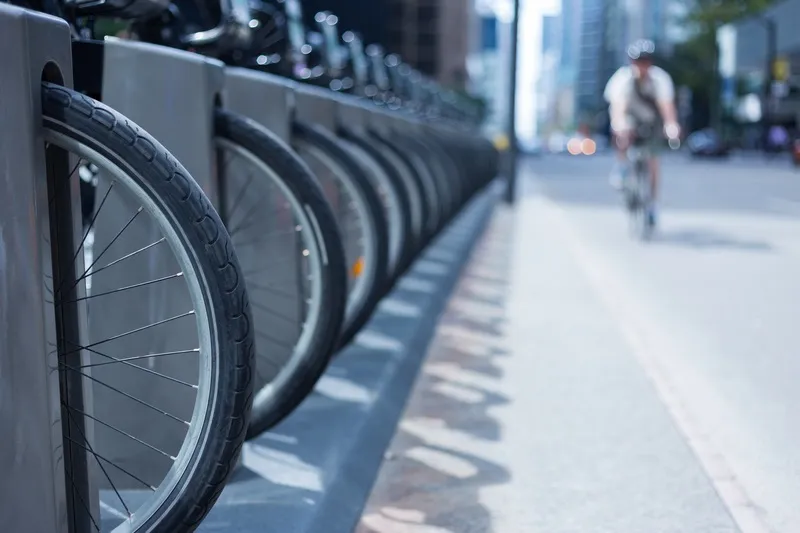Industry insight from Steer Davies Gleave notes that increases in oil production and lower projected global demand growth for crude oil have contributed to declines in fuel prices, beginning in June 2014 and falling 70 per cent to the lowest point in January 2016.
However, the impact of changing fuel prices is not uniform across transportation modes. For instance, in India, retail fuel prices have declined by only 20-25 per cent as a result of the central government increasing the excise duties to shore
February 17, 2016
Read time: 3 mins
Industry insight from 801 Steer Davies Gleave notes that increases in oil production and lower projected global demand growth for crude oil have contributed to declines in fuel prices, beginning in June 2014 and falling 70 per cent to the lowest point in January 2016.
However, the impact of changing fuel prices is not uniform across transportation modes. For instance, in India, retail fuel prices have declined by only 20-25 per cent as a result of the central government increasing the excise duties to shore up its fiscal performance.
While the current fuel price drop is indeed significant, this decline is not unprecedented.
Fluctuations provide an opportunity to evaluate responses to fuel price changes, particularly how these have affected and may continue to affect travel. The early indications, based upon a rolling 12-month average of fuel sales in the US, show a roughly 1.5 per cent increase in demand for fuel in response to the 10 per cent decrease in price.
The US Federal Energy Information Administration forecasts prices to remain under US$3 per gallon through 2016, which would equate to petrol prices remaining below INR 60 per litre in India. If these prices are sustained, will it result in additional economic growth and commuting and/or more discretionary travel? Here we provide considerations for the highway and air sectors.
Until fairly recently, the conventional wisdom was that the elasticity of highway travel to fuel price was roughly -0.3. In other words, a 10 per cent decrease in fuel prices would lead to a three per cent increase in travel. Studies from the last decade, however, reveal that the elasticity of vehicle miles/kms travelled (VMT/VKT) to fuel prices is considerably lower, ranging from -0.03 to -0.17 in the short run and -0.12 to -0.32 in the long run.
Various explanations have been put forward for the apparent decline in fuel price responses. Jonathan Hughes, Chris Knittel and Daniel Sperling propose that fuel costs are a considerably smaller share of household expenses than they were thirty years ago, and that fuel economy standards have further contributed to reduce the share of fuel in consumer expenditures.
Steer Davies Gleave’s work on a wide range of toll facilities tends to confirm the findings of this research. In general, accounting for diverse trip purposes, incomes and public transport alternatives, our experience suggests that the short run elasticity to fuel price (the price response over several months) is on average -0.1 for autos and as low as -0.06 for trucks.
It is too early to say what the long term impact of lower fuel prices will be, but we will need to continue to review whether lower prices in the summer result in additional non-discretionary travel, and whether consumer long-term behaviour changes if petrol prices remain below INR 60 per litre.
The significant fuel price drops in the US and India have also happened in the UK. A Steer Davies Gleave Research and Innovation (R&I) initiative to investigate the effect of lower fuel prices on UK road users has compared real fuel prices to fuel sales by volume (data on travel volumes was not available, so fuel sales were used as a proxy). The investigation discovered, as with the US findings, that there was minimal change in sales during the recent decline in fuel prices.
However, the impact of changing fuel prices is not uniform across transportation modes. For instance, in India, retail fuel prices have declined by only 20-25 per cent as a result of the central government increasing the excise duties to shore up its fiscal performance.
While the current fuel price drop is indeed significant, this decline is not unprecedented.
Fluctuations provide an opportunity to evaluate responses to fuel price changes, particularly how these have affected and may continue to affect travel. The early indications, based upon a rolling 12-month average of fuel sales in the US, show a roughly 1.5 per cent increase in demand for fuel in response to the 10 per cent decrease in price.
The US Federal Energy Information Administration forecasts prices to remain under US$3 per gallon through 2016, which would equate to petrol prices remaining below INR 60 per litre in India. If these prices are sustained, will it result in additional economic growth and commuting and/or more discretionary travel? Here we provide considerations for the highway and air sectors.
Until fairly recently, the conventional wisdom was that the elasticity of highway travel to fuel price was roughly -0.3. In other words, a 10 per cent decrease in fuel prices would lead to a three per cent increase in travel. Studies from the last decade, however, reveal that the elasticity of vehicle miles/kms travelled (VMT/VKT) to fuel prices is considerably lower, ranging from -0.03 to -0.17 in the short run and -0.12 to -0.32 in the long run.
Various explanations have been put forward for the apparent decline in fuel price responses. Jonathan Hughes, Chris Knittel and Daniel Sperling propose that fuel costs are a considerably smaller share of household expenses than they were thirty years ago, and that fuel economy standards have further contributed to reduce the share of fuel in consumer expenditures.
Steer Davies Gleave’s work on a wide range of toll facilities tends to confirm the findings of this research. In general, accounting for diverse trip purposes, incomes and public transport alternatives, our experience suggests that the short run elasticity to fuel price (the price response over several months) is on average -0.1 for autos and as low as -0.06 for trucks.
It is too early to say what the long term impact of lower fuel prices will be, but we will need to continue to review whether lower prices in the summer result in additional non-discretionary travel, and whether consumer long-term behaviour changes if petrol prices remain below INR 60 per litre.
The significant fuel price drops in the US and India have also happened in the UK. A Steer Davies Gleave Research and Innovation (R&I) initiative to investigate the effect of lower fuel prices on UK road users has compared real fuel prices to fuel sales by volume (data on travel volumes was not available, so fuel sales were used as a proxy). The investigation discovered, as with the US findings, that there was minimal change in sales during the recent decline in fuel prices.









